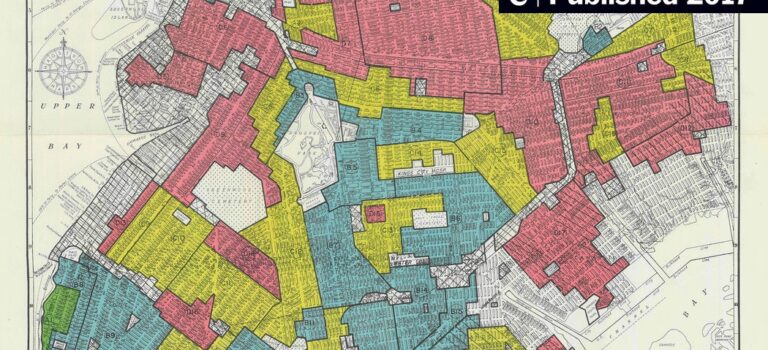Attached I present to you an example for Step 3 assignment I received from a student a few years ago. While this is not a perfect assignment (and, is there such a thing?), I want you to see what your neighborhood description can look like.
STEP-3_exampleAuthor: Satenik Margaryan

It is Monday!
Dear students,
I am back from my conference. On Tuesday, we will go over gentrification as well as Step 3 to make sure you know what to submit by the end of the week.
I will have my regular office hours today at 1 pm and on Tuesday from 9:45 am to 10:45 am. These days, I am also available on ZOOM: https://bmcc-cuny.zoom.us/j/3772687009
I can also meet with you via ZOOM by appointment at a mutually convenient time.

Welcome to Virtual Week 11! Don’t Come to Class on 11/15 & 11/17
Dear students,
We are in Week 11, and it will take place virtually as I am traveling to my conference. This week we are covering Gentrification. Please review the materials in Week 11th. This is also the time for you to finish working on assignments. You also have a discussion for the week instead of meeting in person for this virtual week. Please remember NOT TO COME TO CLASS ON TUESDAY AND THURSDAY.
I will not have any face-to-face office hours on Tuesday and Thursday. Instead, I have office hours today, November 14th, from 12 pm to 3 pm. I will be in my office and on ZOOM: https://bmcc-cuny.zoom.us/j/3772687009
VIRTUAL WEEK 11 (11/14 to 11/23): Researching the Community – Gentrification
Overview
This week we will focus on gentrification, the concept that we turned to from time to time. The term “gentrification” was originally coined in the 1960s by Ruth Glass to describe the transformation of working-class London neighborhoods into middle and upper-class neighborhoods.
What to read:
Brown-Saracino, Japonica. The Gentrification Debates: A Reader, Taylor & Francis Group, 2010. ProQuest Ebook Central,
http://ebookcentral.proquest.com/lib/bmcc/detail.action?docID=1397036.
Get the chapters here:
The_Gentrification_Debates_A_Reader_-_PART_I_WHAT_IS_GENTRIFICATION_DEFINITIONS_AND_KEY_CONCEPTSFrom Redlining to Gentrification: The Policy of the Past that Affects Health Outcomes Today (2021): https://info.primarycare.hms.harvard.edu/review/redlining-gentrification-health-outcomes
What to watch:
7th Street – Josh Pais (East Village NYC)
A documentary about one block of 7th street (between Avenues C and D) in New York City’s East Village where actor and filmmaker Josh Pais has lived since his childhood in the late 1960s. Filmed between 1992 and 1999, the film captures the transformation of the street from a drug-dealing and freewheeling low-rent area for artists and young bohemians to a fully renovated and gentrified spot for trendy art galleries and French restaurants.
What to discuss:
- View the documentary 7th Street about the gentrification of New York’s Alphabet City. If your knowledge of gentrification were limited to the film, what definition of the process would you generate?
- If you could film your own documentary about gentrification based on your personal definition of the process, which people, places, policies, and interactions would you document?
You can comment right below this below. Please post one original comment and two replies to your classmates. Deadline November 20th.
Google Doc, 11/10

WEEK 10 (11/07 to 11/13): Red-Lining and the White Flight
Redlining & the White Flight Overview
This week we are switching gears and focusing on the twin issues that have been plaguing our cities and suburbs/exurbs: the red-lining and the white flight. We will look at the historic trends in housing discrimination and will study government maps that outlined areas where Black residents lived and were therefore deemed risky investments. We will also focus on the sudden or gradual large-scale migration of white people from areas becoming more racially or ethnoculturally diverse.
Learning Objectives:
- Define and explain the definition/concept of redlining
- Describe and explain the impact of redlining on residential segregation
- Describe and explain the impact of redlining on the livelihood and future trajectory of Black residents
- Explain the U.S. policies and legislation that codified redlining and residential segregation
- Explain how federal, state, and local housing legislation and policies advantaged white Americans throughout the 20th century, especially during the years from the Great Depression to the civil rights movement.
- Be able to define and explain the history and meaning of “white flight” in the United States from the 1950s forward;
- Be able to explain the history and importance of white flight to the experience of Black, Latinx, and lower income residents of urban communities;
To Read:
Emily Badger (Aug. 24, 2017): How Redlining’s Racist Effects Lasted for Decades, The New York Times, The Upshot.
How Decades of Racist Housing Policy Left Neighborhoods Sweltering By Brad Plumer and Nadja Popovich Photographs by Brian Palmer Aug. 24, 2020 https://www.nytimes.com/interactive/2020/08/24/climate/racism-redlining-cities-global-warming.html
Introduction: WHAT HAPPENS TO A NEIGHBORHOOD AFTER WHITE FLIGHT in Woldoff, Rachael A.. White Flight/Black Flight The Dynamics of Racial Change in an American Neighborhood, Cornell University
Press, 2011. ProQuest Ebook Central, http://ebookcentral.proquest.com/lib/bmcc/detail.action?docID=3138152.
Get a copy of the chapter here:
White_Flight_Black_Flight_The_Dynamics_of_Racial_C…_-_Introduction_What_Happens_to_a_Neighborhood_after_White_FlightTo Listen:
A ‘Forgotten History’ Of How The U.S. Government Segregated America: NPR May 2017:
To Watch
NPR: Housing Segregation and Redling in America
Include in your Step 3: Why do you live where you live?
With this assignment, you will share a basic assessment as to why you live where you do. Revisit these questions for your Step 3 and critically analyze informal and formal policies and legislation that may have influenced your current residential location.
For this assignment, take time think about where you live…In an essay format, respond to these questions –
- Why do you live there? Why did your family decide to move there? What brought your family to that community or neighborhood? Why that borough?
- How long have you resided there? How long has your family resided there?
- Does your family have plans on relocating soon? Why or why not?
- Have you recently moved into this community? How does it differ from your previous neighborhood?
- Have there been any recent changes to your neighborhood? Explain.
- What is unique about your community?
- What challenges does your community face? What challenges do the people residing in your community face?
- Question on available resources
- Question on needed resources/improvements
- Would you prefer to live in another neighborhood? If yes, tell me more about this other community that you prefer compared to your own.
Power Point

Welcome to Week 9!
This week we end the discussion of Victor Rios’s book. We also will work further on our Step 3 assignment. I will be grading Step 2 submissions today.
There are a number of students who are missing Steps’ assignments. Please get in touch with me as soon as possible so I can help you submit these assignments. Step 3 is on your heels, so there is no time to waste.
I will have my regular office hours today at 1 pm and on Tuesday/Thursday, from 9:45 am to 10:45 am. On both in-office days, I am available on ZOOM: https://bmcc-cuny.zoom.us/j/3772687009
I can also meet with you via ZOOM by appointment at other mutually convenient times.
WEEK 9 (10/31 to 11/06): Criminalizing and Imprisoning Communities of Color | Real People, Real Lives, Real Implications
This week, we will conclude the discussion of Victor Rios’ book Punished. We will discuss the book’s methods and conclusions. We will also discuss how we can solve the issues outlined in his book. Does the author provide solutions?
Readings:
Rios, Punished: Chapters 6 through Conclusion: https://ebookcentral.proquest.com/lib/bmcc/reader.action?docID=865849&ppg=114
Get the chapters here:
chapters-6-conclusion-Victor-RiosVideos
Power Point:
The Pushouts
Special | 54m 16s|
Meet Dr. Victor Rios, a high school dropout and former gang member turned award-winning professor, author and expert on the school to prison pipeline, who works with young people who have been pushed out of school for reasons beyond their control.
Extra-Credit Event November 3rd
Careers in the Courts will be held next week, on November 3rd at 5:30pm via Zoom! Students should register in advance to attend at https://bit.ly/3guieumnow. Panelists who will be speaking to students are:
Bryn Whittle, Senior Counsel to the Attorney General and Director of Community Engagement. She previously served as the Special Assistant to the Attorney General on community engagement and community justice initiatives. Prior to joining the Department of Law and Public Safety, Ms. Whittle was a sole practitioner and served as the Municipal Prosecutor of the Township of West Orange, New Jersey. Earlier in her career, Ms. Whittle was a Senior Staff Attorney with the Community Health Law Project, a statewide legal services organization dedicated to the advocacy and representation of low-income, disabled New Jersey residents, for sixteen years. While there, she was a longtime member of the Advisory Committee on Minority Concerns for the Essex Vicinage and the Dean’s Diversity Council of Seton Hall University School of Law. Ms. Whittle is a graduate of Rutgers University and Seton Hall University School of Law.
John A. Montero, Senior Court Clerk at the NY County Supreme Court with 17 years experience where he began his career as a certified Spanish interpreter. As a peace officer his tasks involve assisting the judge with the management of a court part, including supervising court staff, court officers, reviewing filings and submissions for compliance, and processing all outgoing court orders. His current assignment is in the integrated domestic violence part, focusing on criminal, matrimonial, and family cases that arise out of domestic violence incidents.
Here is the flyer:
Careers-in-the-Courts-6
Welcome to Week 8! Please Bring Your Laptops
Dear students,
This week signifies the start of the second half of the semester. You are expected to have submitted Step 1 and Step 2 by this time. I have posted Step 3. With these three steps completed, you will have all parts for your final paper and presentation. I will demonstrate how to do Step 3 in class. Please remember to bring your laptops. If you are having any difficulties with any of the work, please don’t hesitate to get in touch with me (ask your classmates, I do help).
We are continuing to read Victor Rios’s book Punished. Please make sure to read the book (Chapters 2-5). We will discuss the important themes from the chapters. These questions will be on the final exam.
I will have my regular ZOOM office hours on Monday at 1 pm and on Tuesday/Thursday, from 9:45 am to 10:45 am (in my office and on ZOOM). On the three days, I am available on ZOOM: https://bmcc-cuny.zoom.us/j/3772687009
I can also meet with you via ZOOM by appointment.